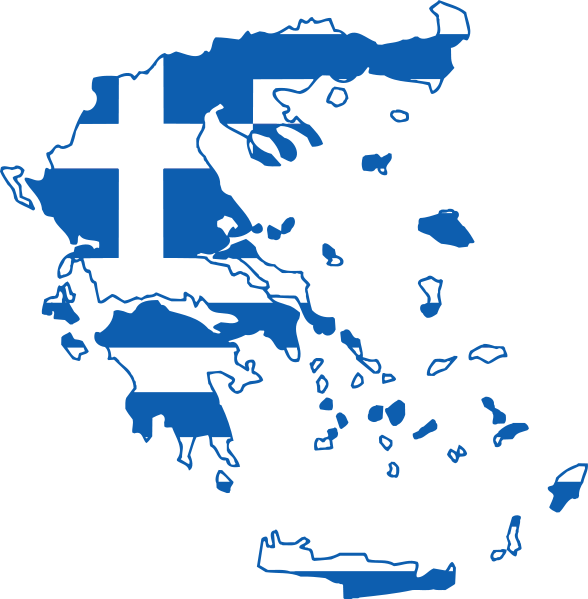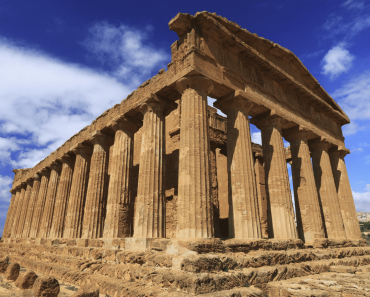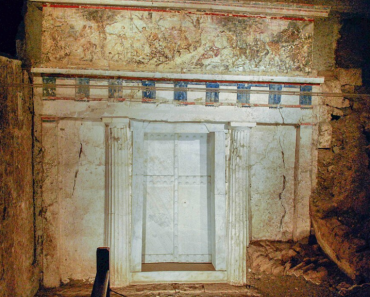For my money, there is no more captivating view in all Italy than the vast panorama of the harbour of Syracuse, framed by its majestic, honey-coloured Baroque buildings. The city’s origins go back to the eighth century BC, but it found fame when in 415 an ill-fated Athenian armada entered that very harbour. Ancient glories can still be glimpsed today, in the cathedral (built around the fifth-century BC Temple of Athena) and in the archaeological park, which boasts a vast theatre, and the notorious quarries where the defeated Athenians were put to work.
Most modern histories of ancient Greece centre on the Greek mainland and Asia Minor. But southern Italy too was home to powerful and influential Greek cities. Of these, Syracuse was the most spectacular. Its success in repelling the Athenian invasion precipitated Sparta’s eventual victory over Athens in the Peloponnesian War. It also prompted a surge in Syracusan pride. That giddy period is beautifully evoked in Ferdia Lennon’s riotous novel Glorious Exploits (2024), focusing on two Syracusan gadabouts obsessed with the Athenian poet Euripides.
James Romm’s Plato and the Tyrant describes the next phase, when the city slid into tyranny under first a father and then his son, both named Dionysius. This is a work of history, but it is as compelling as any novel. Syracuse in the late-classical period found itself locked in a love-hate relationship with Athens. The frenemy cities could not get enough of each other. Plato and the Tyrant reconstructs a crucial chapter in that psychodrama.
Both Dionysius I and II seem to have hosted Plato, the famous Athenian philosopher, in Syracuse. I write ‘seem to’, because the only contemporary ‘evidence’ for Plato’s visit comes in a series of letters attributed to him. Some modern scholars believe these to be forgeries written later in antiquity, designed to give the otherwise shadowy figure of Plato (who barely speaks of himself in his works) a richer, more glamorous biography. Romm is a self-avowed maximalist: he not only accepts as Platonic the parts of the letters relevant to the Syracusan stay but is also open-minded about many of the details archived in the much later biographical accounts of Diodorus Siculus, Plutarch and Diogenes Laertius.
The story Romm weaves from these slim threads is a brilliant one: of a high-minded philosopher convinced of the good he could achieve if he could persuade the most powerful tyrant of the day to accept his counsel, and of his failure to do so in the face of irremediable corruption and decadence. Despite trying three times, once with the father and twice with the son, Plato was humiliatingly rejected. But he managed, in Romm’s telling, to transmute his failure into an extraordinary success: his response was a masterpiece of world literature. The Republic offers a model of a utopian state run by virtuous rulers, ‘philosopher-kings’. In the same work, Plato speaks of vicious tyrants: wolfish figures in thrall to their own appetites, prone to paranoia, repression and warmongering.
If we believe the ancient biographies of Plato, it is not hard to conclude that The Republic’s theme of kingship and tyranny was rooted in his own experiences (even if the dramatic dialogue is set in a period before Dionysius came to power). Romm, however, pushes much further, pinpointing multiple Syracusan connections. He draws attention to the physical setting of the dialogue: the house of Polemarchus (a Syracusan expat) in the harbour town of Piraeus. In the figure of Glaucon, who in reality was Plato’s elder brother, he sees traces of the younger Dionysius.
Most strikingly, Romm perceives in the philosopher-king an idealised version of Plato’s student and friend Dion, whom our sources present as a virtuous figure who disapproved wholeheartedly of the luxury and cruelty of the court of the Dionysii. In the mid-350s, Dion led a revolution that unseated Dionysius the Younger; there must have been hope at the time that he would bring in a new era of enlightened rule. Yet Dion’s rule began, unpropitiously, with the callous murder of a political rival. Plato was destined to be disappointed again. Dion’s rule did not last: it was not long before he was dispatched in a coup.
The story of Plato, Dion and the Dionysii was told many times in antiquity – most influentially by Plutarch, who lived half a millennium after the events he described. For Plutarch, it offered not only an insight into the personal life of a philosopher he favoured, but also a timeless morality tale of the endless, and endlessly unresolved, struggle between virtue and power, between ideals and practicalities, between philosophers and rulers. Romm’s tale too has timeless elements: it is hard not to spot contemporary resonances in his references to the elder tyrant, for example, as an anti-intellectual, populist ‘strongman’ prone to fomenting conflicts abroad in the hope of shoring up his wavering support base at home.
There is no sure way of delving back through the mythicising overlay and reaching the truth of the matter. The ancient sources are not neutral witnesses: their authors were already fully committed to the project of working out after the event what circumstances motivated Plato to devise his extraordinary philosophical experiment in political utopianism.
Given the material he has to work with, Romm inevitably takes leaps of faith. But he does so knowingly, and courageously. While we cannot ever hope to know the full historical truth, his instinct is surely right: every lasting philosophical intervention responds to political crisis. Behind every visionary lies a calamity. Behind every Arendt lies a Shoah. Romm does a superb job of imaginatively reconstructing the backstory to a philosophical masterpiece.







